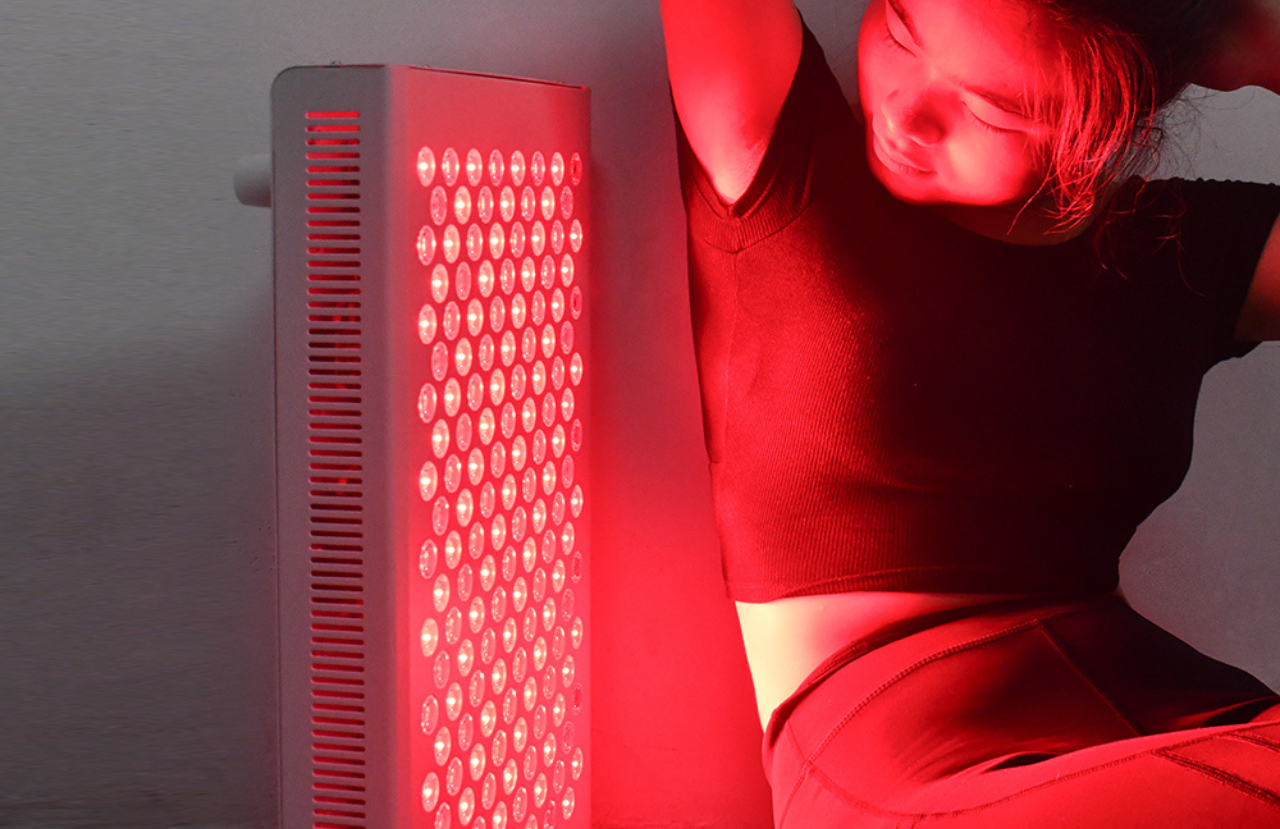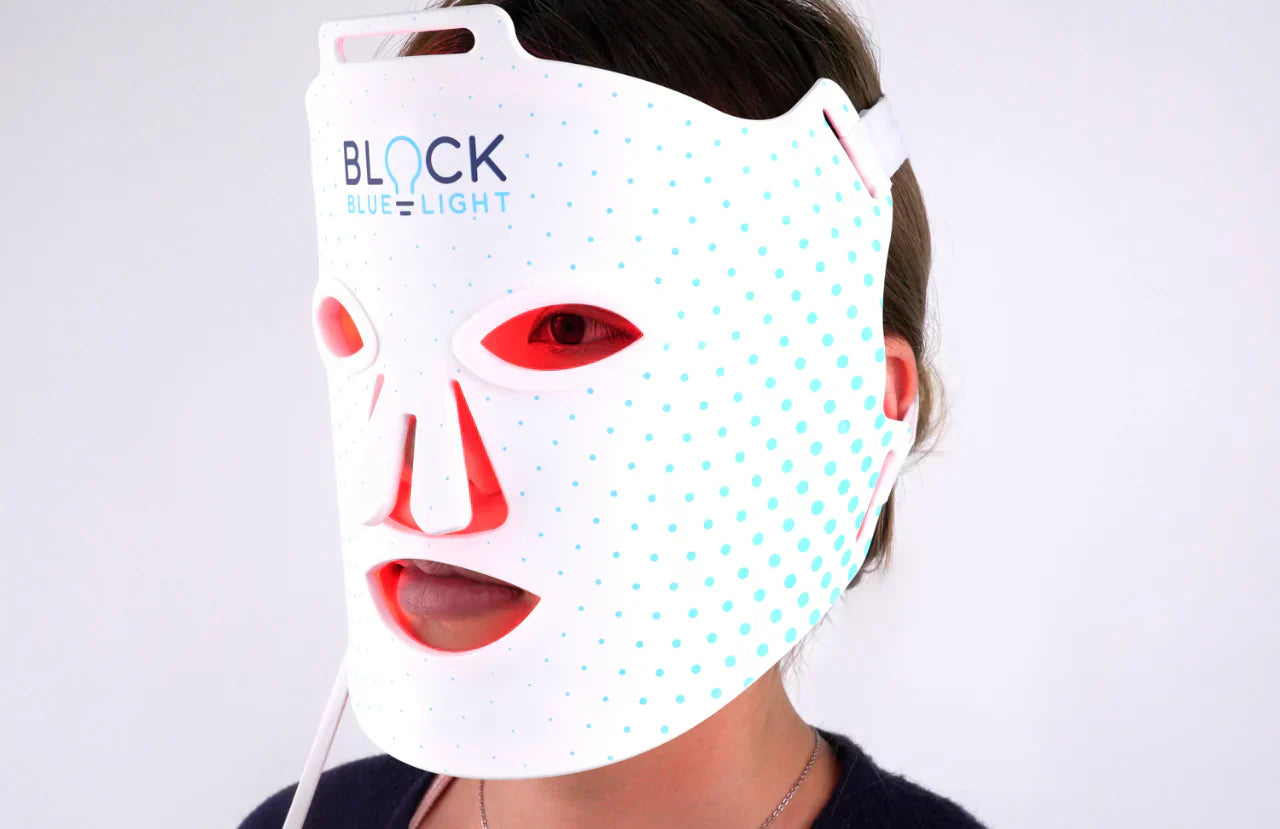Do you ever wonder why screen-manufacturers don’t simply block the blue light from their devices if it is so harmful?
Continue reading to find out why this is impossible, why screens emit blue light, and how using science backed computer glasses and blue light glasses can help mitigate the harmful effects.
To understand why screens emit blue light, we’ll first have to understand how screens work.
How do screens work?
Did you know that animals don’t see the same colours on the screen that we do? This is because screens are made for human eyes.
A digital screen is made up of millions of tiny dots called pixels.
![]()
Each ‘pixel’ consists of 3 colours- blue, green and red. These pixels are so small that you can’t see the individual dots on your screen. When you try to take a photo of your screen from another device, you can see them appear in the photo, as you can see in the image below.
Human eyes have cells that detect colour, called ‘cone’ cells. Cone cells are present on the retina of the eye and detect colours. They then transmit the signals to the brain which processes them according to three colours- blue, red and green. This is why screens are made to emit those three colours only and this is why screens emit blue light.
Animals have different colour receptors than humans.
For example, dogs have dichromatic vision and can see colour within two spectrums of light- blue and yellow. So colors on the screen that are made up of green light won’t be visible to them, or they’ll see different colours to the ones that we see.
How are screens built and why do screens emit blue light?
Since screens are not painted or made of actual pigments - after all, a screen is not a solid object, so the display is made by emitting different colors of light.
Screens built of 2 pieces of plastic/glass with a liquid crystal material between them (LCD displays). The liquid crystal emits light in these three colours to trick the eyes into seeing colors that are not there. Electric current is passed through the crystal (according to which image needs to be displayed) and they release light accordingly.
Your brain then translates these lights into colours. For example, a lot of red activation and a little less green activation represents yellow.
Remember how we used 3 different colours in school to create all the other colours. They were called ‘primary colours’ - blue red and yellow. For paints and inks blue red and yellow are the primary colours and they are mixed to make up all other colours. So to make green, we mix yellow and blue.

The primary colours for light are slightly different. Instead of yellow, we have green. You can see the colour wheel for light in the image below.

Secondary Colours are those colours that are made by mixing primary colours.
So Cyan is made by mixing green and blue.
Purple is made by mixing red and blue
Yellow is made by mixing red and green.
When all colours of light are shown at once, the screen looks white. And when the pixels emit no light, the screen is black.
You might be thinking; if all are rays of light, then how does your brain differentiate between different colours? The answer is wavelengths. All colours have different wavelengths. For example, you can see the wavelengths of different colours below.
|
Colour |
Wavelength |
Energy |
|
Red |
685 nm |
1.825 |
|
Green |
532 nm |
2.33 |
|
Blue |
472 nm |
2.625 |

As you can see from this chart, red has the longest wavelength, while green and blue have the shortest wavelength. The shorter the wavelength of light, the more energy it has. So blue and green light (in the turquoise range) carry the most energy.
Coming back to the topic, when you click your mouse, tap your mobile screen or type anything, it sends a signal to the electron guns present at the edges of the screen. These pass an electric current through the liquid crystal which releases light accordingly.
The colours of light released are blue, green and red wavelengths which your brain translates into images.
However, all of this happens in split milliseconds which is why we see the results immediately.
If blue light is so harmful, why don’t manufacturers block it completely?
You might be wondering if blue light is harmful, why do screens emit blue light? Why not block it out completely?
As you can see from reading about how screens work, you’ll realize that it’s impossible to block the blue light completely. Without blue light, colours can’t be formed properly and most of them will be missing. We won’t have purple, cyan or even a white display, if blue light was to be removed from screens.
Manufacturers could possibly use another colour, say violet light instead of blue light to create colours. However, the range of colours that could be produced would be reduced and the screen would look unattractive. People would not buy such devices and the manufacturer would go out of business.
The combination of blue, red and green gives the widest possible range of colours, which is why it is used.
Why is blue light harmful when the other colours are not?
As we saw from the table above, blue light carries more energy than red or even green light. The shorter the wavelength, the higher energy it carries. (As you can see from the image above, blue light (and to some extent turquoise light) has a taller ‘crest’ which signifies more energy. Blue light or high-energy visible light (HEV) is emitted from television screens, LED tubelights and bulbs.
You might be surprised to hear that even sunlight contains blue light! Yes, blue light naturally is present in the environment. In reasonable quantities during the daytime, (and from natural sources) it is actually beneficial for us. It helps regulate our sleep-wake system. However if exposed to it after sundown, or in excessive amounts during the day, it can lead to computer vision syndrome, sleep disruptions, and age-related macular degeneration.
Unlike other colours in the spectrum of light, blue light plays a special role in our body.
We talked about how all colours of light (including blue light) stimulate cone cells in our retina to enable us to see colour. Blue light stimulates a third kind of cell which has only been recently discovered. In 2000, scientists discovered ipRGC cells which are present at the back of our retina. These cells have nothing to do with our vision, but regulate our sleep-wake pattern (circadian rhythm). Blue light stimulates these cells and tells our brain when it is daytime and when it is night.
- During the daytime when the sun is shining, the blue light in sunlight activates ipRGC cells which send a signal to the brain that is time to wake up. The brain releases the cortisol hormone which is responsible for alertness.
- Similarly, after sunset, when there is no blue light exposure, ipRGC cells signal to the brain to release the sleep hormone melatonin.
Now that you understand why screens emit blue light and why manufacturers don’t block blue light completely, you’ll be wondering what to do. Our eyes have a limited ability to block blue light so if we’re using screens, we have to learn how to minimize exposure ourselves.
As research reveals the effects of blue light on eyes and health, more options are becoming available for protection. The easiest way to reduce exposure is to reduce screen time overall and take frequent breaks while working. In addition to this, blue light blocking glasses are available to filter out harmful wavelengths from digital devices. However, all blue-light glasses are not made equal so it’s important you learn how blue light blocking glasses work, before trying a pair.
Refer to our FAQs for quick answers to further questions about blue light, and you can always contact us if you find your questions aren’t answered in our blog!
References:
The illusion of RGB screens. (2021). Retrieved 23 February 2021, from https://jakubmarian.com/the-illusion-of-rgb-screens/
Colors on A Computer Screen. (2019). Purdue.Edu.Pk. https://www.chem.purdue.edu/gchelp/cchem/RGBColors/body_rgbcolors.html#:%7E:text=Each%20pixel%20on%20a%20computer,%2C%20and%20blue%20light%2C%20respectively







